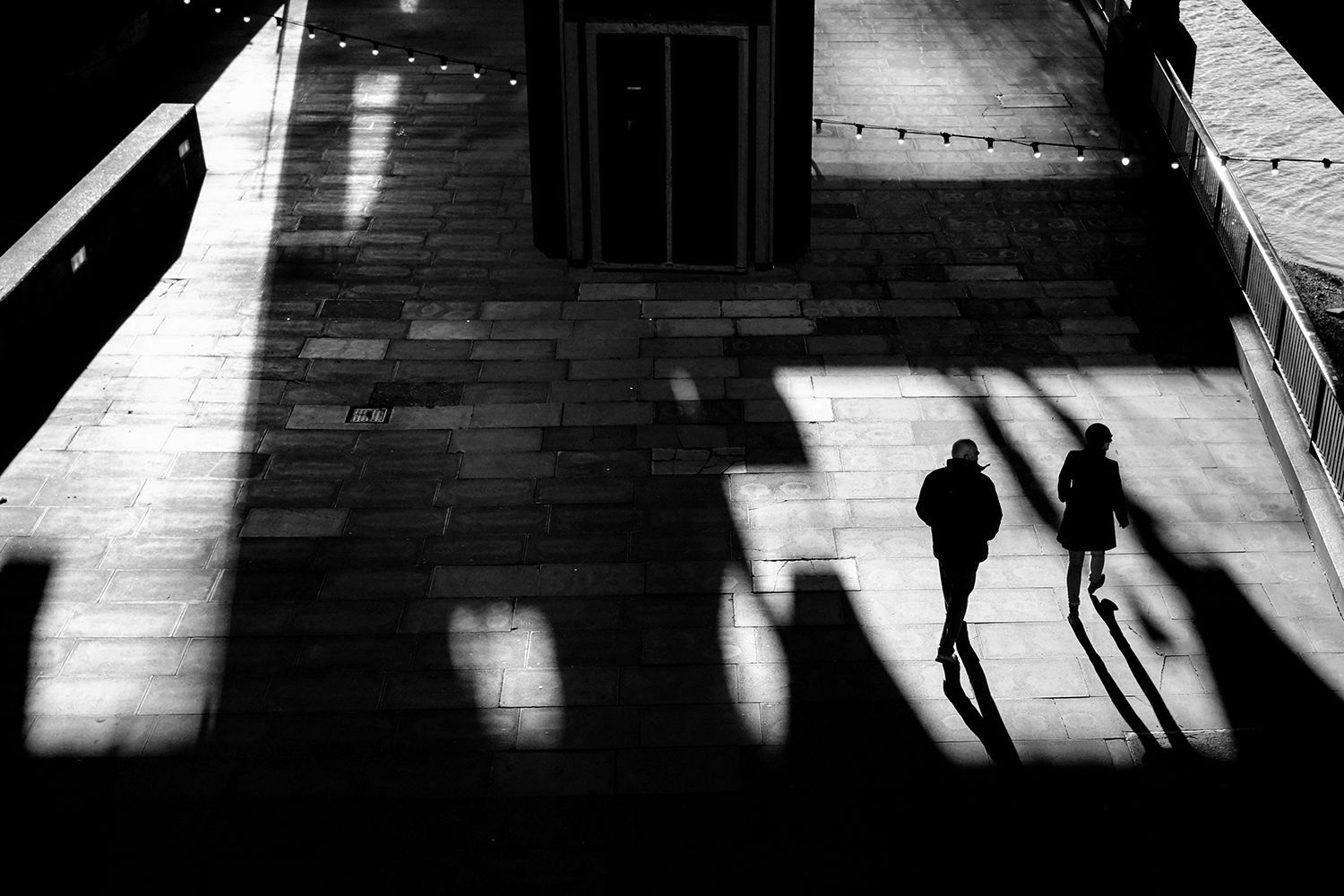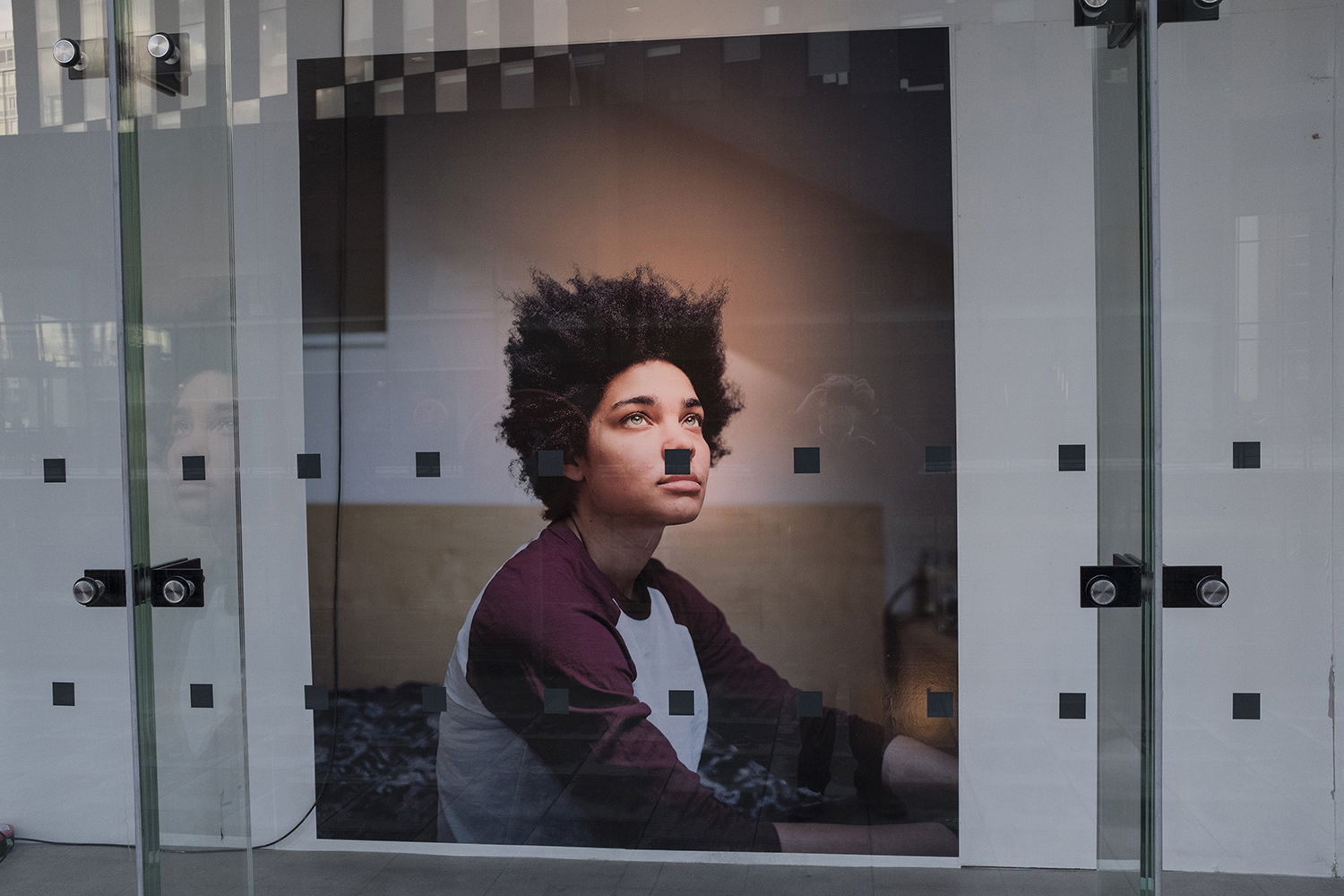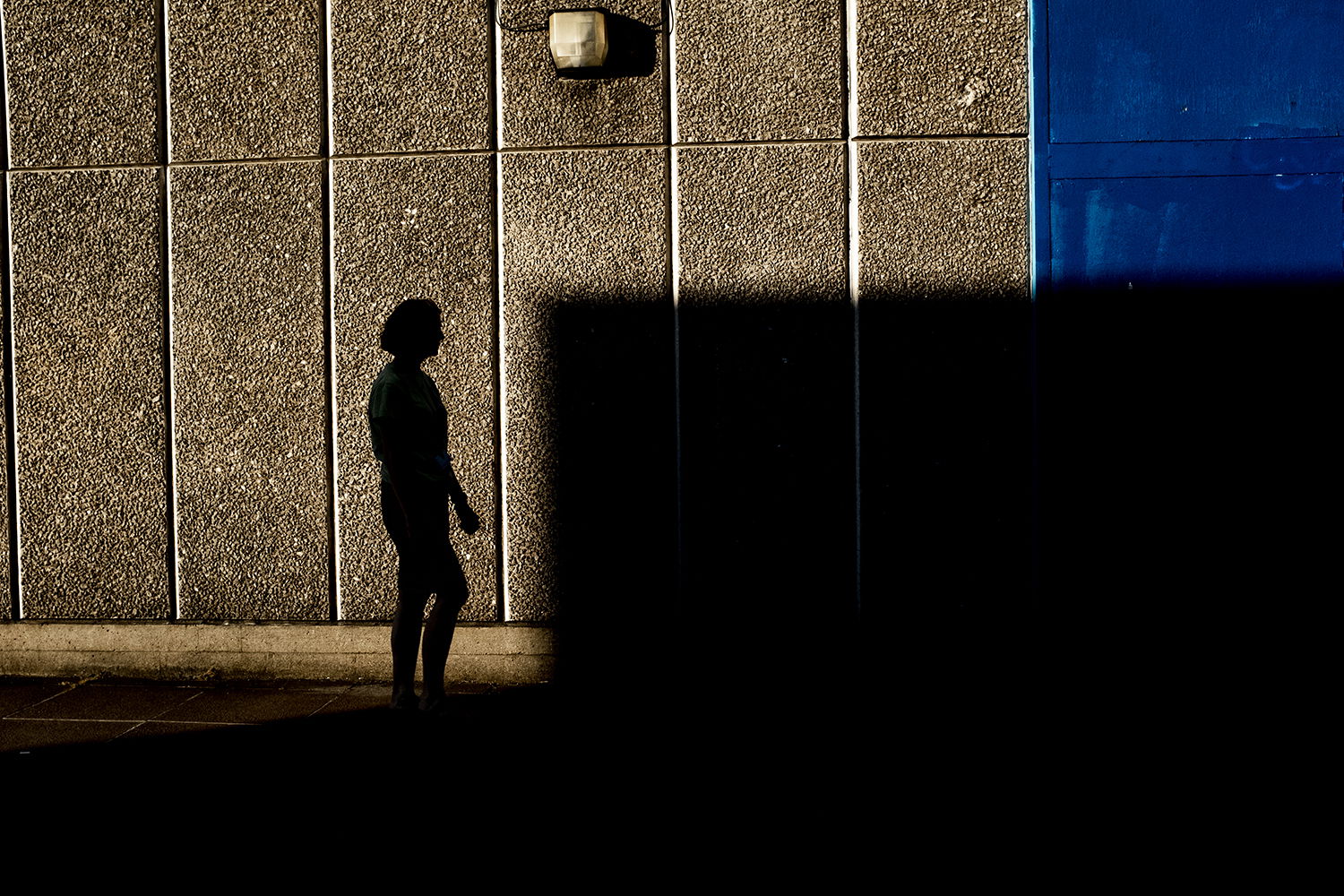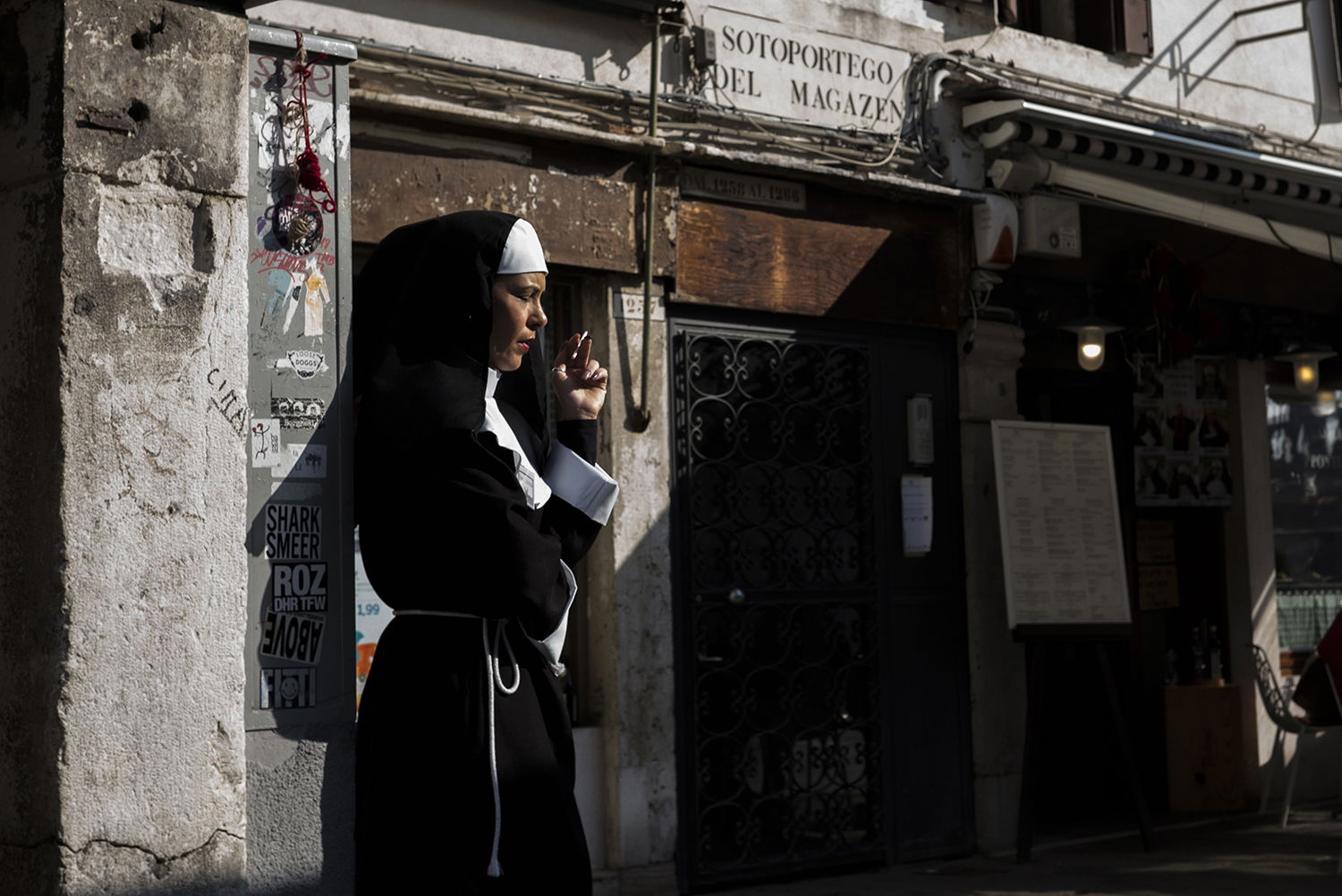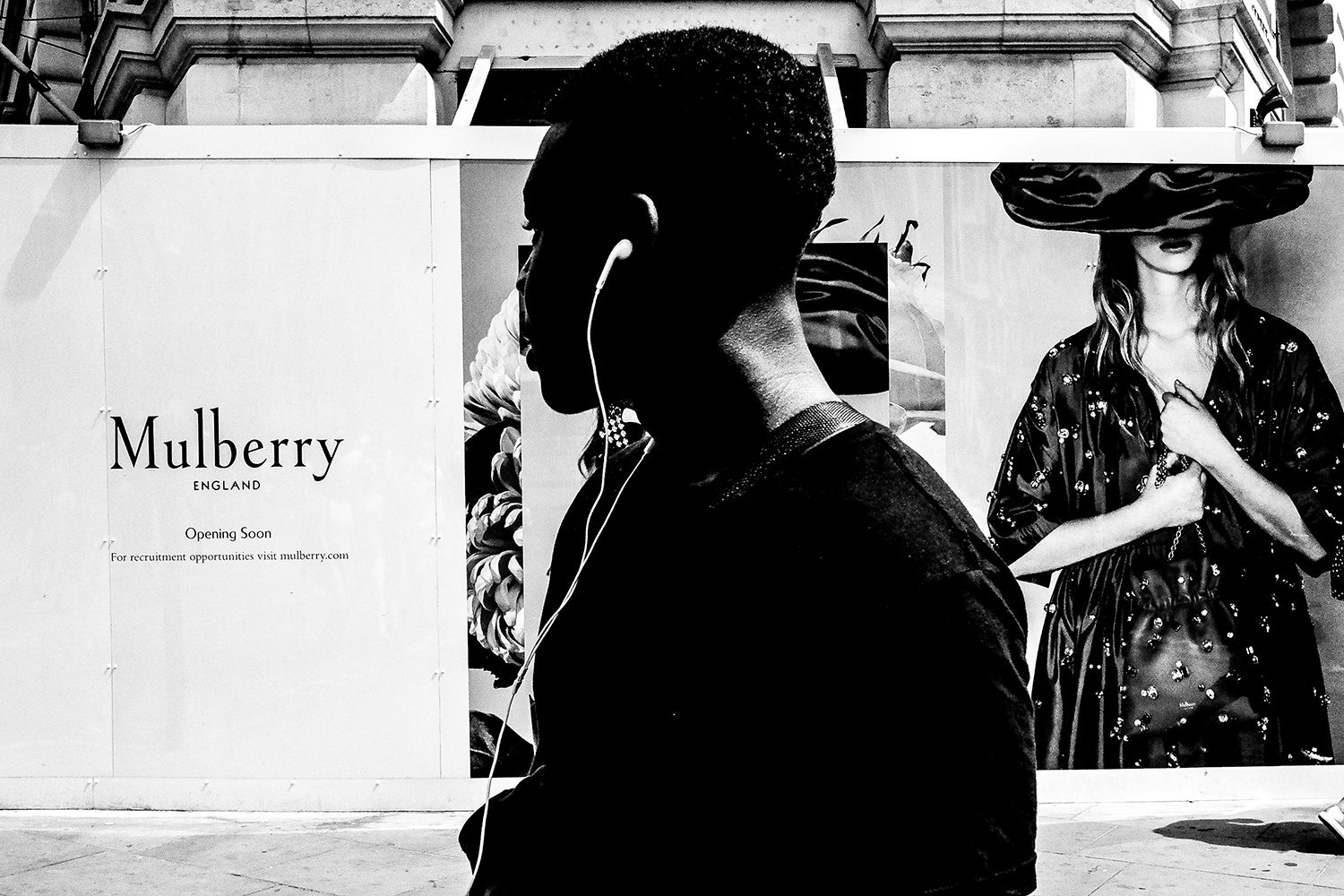Brian Lloyd Duckett is a professional street photographer who runs workshops across the UK and Europe. He shoots exclusively on Fujifilm, the X100F being his weapon of choice. In this three part guide, which aims to build your confidence, Brian gives you an insight in to what he teaches to help you become a better street photographer.
Deal with the ‘fear of being challenged’
The more you practice street photography, the more you will accept that being challenged really is no big deal. If you are determined to photograph strangers on the streets, you will be challenged. I hardly ever have a week go by without someone asking me ‘Why did you take my picture?’ Or simply saying ‘Did you just take my picture?’.
When challenged in this way, the first point to understand is that most people are asking out of simple human curiosity, bemusement or even flattery; rarely are people offended. However, most of us do still worry about being challenged and this is one aspect of street photography that we all need to deal with at some point—some of us more than others. We don’t want to be asked why we are taking someone’s photo, or get asked to delete an image, or—even worse—be threatened with physical violence. Of course, it’s best to avoid being challenged in the first place, and your chances of this are increased if you work quickly and quietly, don’t get in people’s faces and look more like a tourist than a photographer.
When people challenge you, you don’t have to explain yourself, and some street photographers refuse to engage in any way with their subjects (although this can seem a little rude). People’s curiosity is often satisfied with a simple ‘stock’ explanation, which you should have ready in anticipation of these situations: you might say you’re working on a project, that you’re doing a photography course, or simply that you are documenting urban life in that particular area. Just remember to smile, be non-confrontational, and confident of your motives for taking that picture.
My advice in most circumstances, if you are spotted taking someone’s photo, is to smile, say ‘thank you’ and walk away. Most people will simply smile back and that will be the end of it. Try to avoid getting into dialogue with people as this may lead to you showing the person the image you have just taken of them, which in turn may lead to you being asked to delete it.
Don’t follow the ‘get in close’ rule too closely
You’ll probably have come across the ‘rules’ of street photography, one of which is the necessity to get really close to your subjects in order to produce a decent street image. I know plenty of good street photographers for whom this is the Holy Grail and is the only way to approach street photography. My view is that it is sometimes essential – and often helpful – but if you can smell the breath of your subject you’re probably too close.
Legendary photojournalist Robert Capa advocated getting in close, but he probably meant fairly close—in other words, close enough to get the right composition. A fair amount of today’s street shooting involves poking the camera right in the subject’s face – maybe from less than a metre away – but is that really what you want to do? It may be edgy and provocative, and it may be fashionable for a while, but it can have a claustrophobic feel to it that possibly lacks longevity as a style.
This style of street photography is often lacking in aesthetic value and, if you want my personal opinion, it’s sometimes pretty pointless. Who wants a close-up of some random stranger coming out of Starbucks? I think there is much more to street photography than this
Another disadvantage of getting too close is the exclusion of any meaningful background. Much of the spirit of street photography is about context and a tightly cropped shot of somebody’s head will usually exclude the background.
There will, of course, be times when getting close to our subject is beneficial or essential – and, in such cases, get close you should – but don’t let it become one of your intractable rules of street photography.
De-sensitise yourself
Psychologists define de-sensitisation as ‘the diminished emotional responsiveness to a negative, aversive or positive stimulus after repeated exposure to it.’ In other words, the more you do something the more you become comfortable with it; familiarity breeds acceptability.
So, for example, if you are terrified of going to the dentist, your first appointment would involve nothing more than visiting the surgery, meeting the dentist and having a look around; your second appointment (and maybe your third) would involve nothing more than a check-up; any treatment would come much later. In other words, you are exposed to small, but gradually increasing, doses of the stimulus, building up to a level of eventual comfort with, or acceptance of, that stimulus. All that may sound a bit scientific, but we can make the concept work for us.
We can apply this principle to our fear of shooting people on the streets. If you were to start shooting from a distance and gradually, say over a period of weeks, move closer to your subjects whilst using a wider lens, you would be desensitizing your fear leading to a point, over time, when that fear is either eliminated or unimportant. How long it takes depends on the level of fear and your own psychological make-up, but do try it – it works!
Shoot quickly
The less time you spend taking a photo, the less likely you are to be seen and, consequently, the less likely you are to feel uncomfortable. Here are some techniques you can use which will speed up your street photography:
- Have your camera pre-set. The longer you spend messing around with camera settings, the more likely you are to draw attention to yourself. A good rule of thumb is aperture priority, f/8 and ISO 1200; these are my ‘go to’ settings and work for me 90% of the time. For cameras such as my FUJIFILM X100F, ISO of 1200 or even 3200 is a breeze – it’s better to have a tiny (almost imperceptible) amount of noise than subject blur or camera shake.
- Compose in your head. Frame the picture in your mind and only bring your camera up to eye-level when you are ready to take the picture.
- Use a prime lens. Time spent zooming, as well as increasing the likelihood of missing the shot, will attract attention.
- Use zone focusing. Have your camera set on manual focus and set to a pre-determined distance. Assuming you’re working at a small aperture of at least f/8 and your lens is focused on a spot around 10 feet away, most of the subject matter within your ‘zone of operation’ (probably between about 6 and 15 feet) will be sharp. Using manual focus will enable your camera to respond more quickly and will also help speed up your own response to changing situations.
- Make sure your camera is switched on and ‘awake’ at all times. The downside is a reduction in battery capacity but what use is a full battery if you’re going to miss shots because your camera is asleep?!
- Use a wrist strap rather than a neck strap. That way your finger will always be on the button and the camera ready for action quickly.
Shoot covertly
It’s possible to shoot covertly without being ‘creepy’ about it. I use some of the following techniques to help me go unnoticed:
- Shoot ‘past’ the people in front of you. This technique works particularly well when people are walking towards you and you are using a wide-angle lens (the wider the better – somewhere between 28mm-35mm is perfect). You simply bring your camera up to eye level, ignoring the people in front of you, and pretend to shoot something in the distance. Don’t look at them and focus your attention on the space behind them and, when they are in your frame, take the picture. Keep the camera at eye level until they have passed and they will be none the wiser.
- Shoot from the hip. Bringing your camera up to eye level will usually alert people to the fact that you’re about to take a picture. With some practice (and plenty of wasted frames along the way), you will get to know your camera and lens combination really well and will know exactly what shooting angle is required in order to compose the shot. If your camera has an articulated (tilting) LCD screen, shooting from the hip becomes much easier. I find the FUJIFILM X-T2 and even my slightly older X70 perfect for this technique. Whilst some street photographers shun this technique as being an easy option, it is, nevertheless, a useful technique which can work well with a wide-angle lens. However, don’t become overly reliant on this technique and use it as a ‘crutch’; you should get into the habit of using the viewfinder in the normal way, only shooting from the hip when you really need to do so.
In the final part of this series, I will be giving you even more street photography tips and advice.
**Please note that the views and opinions expressed in this article are that of the author.**


